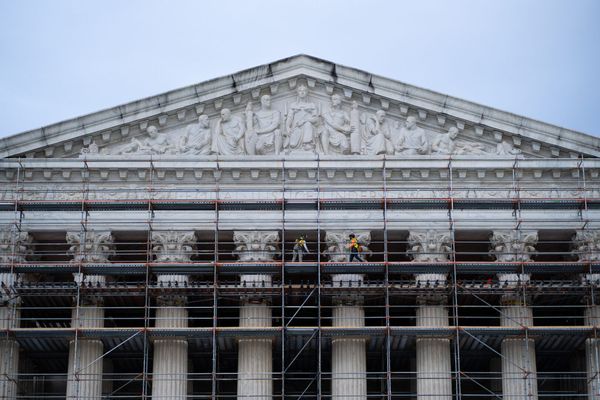
It’s more than a philosophical question because in one case that is exactly what could occur.
The answers are somewhat complex, not just for the state and federal governments, but also environmental groups as Queensland enters an era of massive change and investment in renewable energy.
But environmentalists claim a bigger problem exists. They suggest there is a rush to get projects approved ahead of major reforms flagged in the Samuel review and crucial habitat was being destroyed.
The majority of the planned renewable projects shadow the existing transmission lines within renewable energy zones.
A report written last year by Jeanette Kemp, a former Queensland government principal botanist, said the compromises being made were inexplicable, given the very high price the community would pay through species loss and environmental degradation.
She said the “onslaught” of renewable projects being fast-tracked in Queensland include many that were located within high-quality tracts of untouched vegetation, many with “very significant conservation values”.
She said 26 rare ecosystems were likely to be affected in some way if all the proposals went ahead and 15 ecosystems listed as “of concern” would have more than 5 per cent of their extent cleared.
Another 18 threatened species were likely to occur within or very close to the footprint of one or more of the north Queensland wind farm proposals.
“I am a supporter of renewable energy, especially wind farms: However, I am strongly suggesting that all government agencies and concerned non-government organisations call for an urgent review of the local impact of all current Queensland proposals occurring in remnant vegetation,” she said.
Creeping environmental impact
Therein lies the problem. Australia needs renewable energy, but the rush to meet deadlines may have serious environmental consequences.
Significantly, one of the biggest financial backers of renewables projects is the state government-owned generation companies through off-take agreements or equity partnerships.
Just like the development of the coal seam gas projects more than a decade ago, it’s the creeping cumulative impacts that concern environmentalists.
Queensland Conservation Council strategist Clare Silcock said the issue was “definitely complicated, but there are lots of steps we think the government can take to manage the impacts”.
She said the renewable energy zones where the government wanted the projects to be sited were “just circles on a map”, and work was needed on what existed within those circles.

The state government has announced it was working on “bioregional” planning to protect areas that matter while also allowing for faster development decisions.
The bioregional plans would be designed to better protect areas that matter for the environment and allow for faster development decisions. Bioregional plans would also deliver on the new standards.
When the idea was announced in December, state Environment Minister Meaghan Scanlon said the bioregional plans provide developers and environmental consultants with clear guidance on areas to be protected, areas that can be fast tracked for development, and areas where development can proceed with caution.
Fast-tracked areas may allow for certain types of development to proceed without further Australian government approval.
The bioregional plans would “consider cumulative impacts on the environment and future threats as a way to build environmental resilience in a changing climate. That is what these plans will address,” Ms Scanlon said.
Swift action needed
But anything related to government process is slow.
“We are losing time. We have been advising the government that they need to get on top of this,” Ms Silcock said.
Ark Energy is one of the state’s biggest proponents of renewable projects. The wind and solar farms it has proposed are massive as the company forges a new path in decarbonising the business of its owner Korea Zinc, which also owns the Townsville-based nickel refiner Sun Metals.
Two of its projects, the Boomer Range wind farm in central Queensland and the Chalumbin wind farm, near Ravenshoe, have drawn fire from environmental groups over the potential destruction of habitat.
The Boomer project would destroy 925 hectares of koala habitat, according to documents it has filed with the federal government.
But the company points out that in its as-yet early investigations at Boomer, no koalas have been found, just traces of their existence and it claims it can “largely avoid” sensitive areas in development.

“During the design and planning process the project team will continue to observe the ecological principles of avoidance, minimisation and mitigation, including minimisation of the construction disturbance and mitigation measures such as use of sensitive clearing techniques,” Ark said in a statement to In Queensland.
“Generally, an objective of all Ark Energy’s renewable energy projects is to achieve net-positive outcomes for the environment and biodiversity in the project area over the longer term.”
Biodiversity cost
The cumulative impact from all the projects was staggering and had not been considered in the approval process, Rainforest Reserves Australia founding member Steven Nowakowski said.
Mapping of many of the areas was also scant so knowledge of the habitats was thin, he said.
The Upper Burdekin project, being developed by Andrew Forrest’s Windlab, borders the Wet Tropics World Heritage area.
About 130 turbines were to be built and 887 hectares of vegetation cleared. It also has significant koala habitat.
Ark’s Chalumbin project, near the Wet Tropics area, would have 86 turbines and would clear 1700 hectares of what Rainforest Reserves Australia said was an area of high biodiversity.
There are dozens more projects dotted around the state and Mr Nowakowski said they were largely being built in ridgelines that had been untouched up until now.
“There’s a biodiversity cost,” he said.
“There need to be areas that are out of bounds.”
“The Kaban (also near Ravenshoe) project woke everyone up,” he said.
Kaban’s owner Neoen said on its website that “overall, we consider the immediate and long-term benefits which wind farms bring to communities, offset any loss of visual amenity”.
Kaban is small by wind farm standards. Just 28 wind turbines spread across 1300 hectares, yet the scars it left on the landscape shocked environmentalists.
He said one answer to the loss of habitat was the CopperString project, which is a transmission line from Mt Isa to Townsville and traversing an area that was rich in solar radiation and wind yet with little in the way of threatened species habitat.
However, CopperString is not a certainty despite the political support it has and has already been scuppered once.
This article first appeared in InQueensland. Read the original article here







